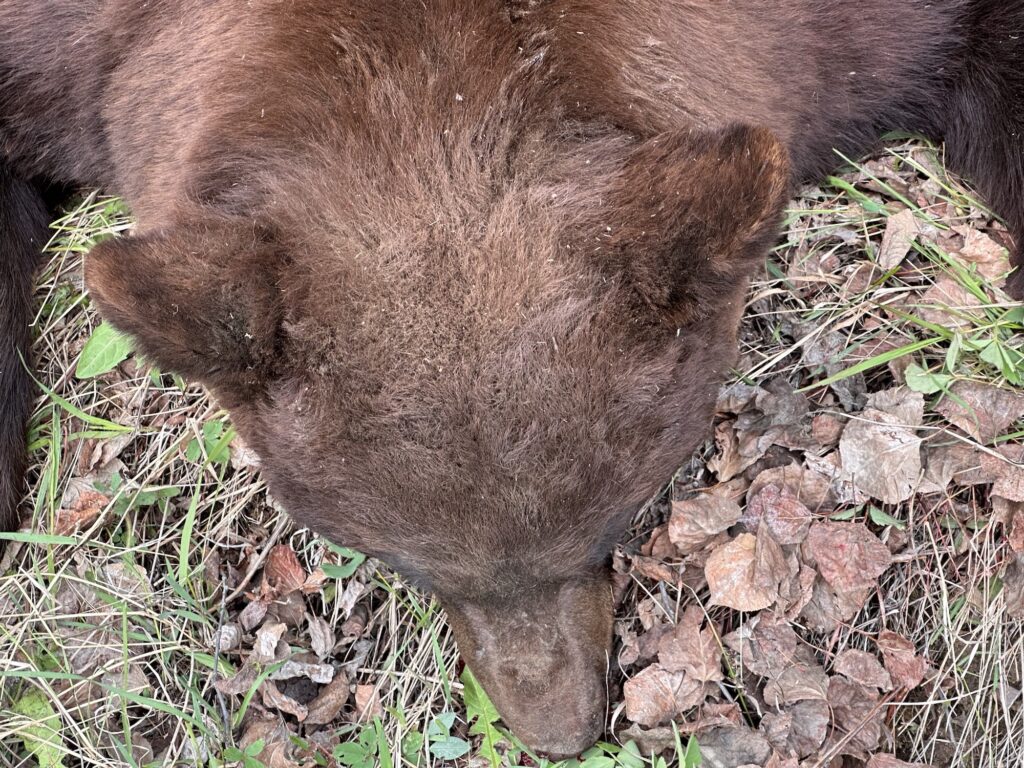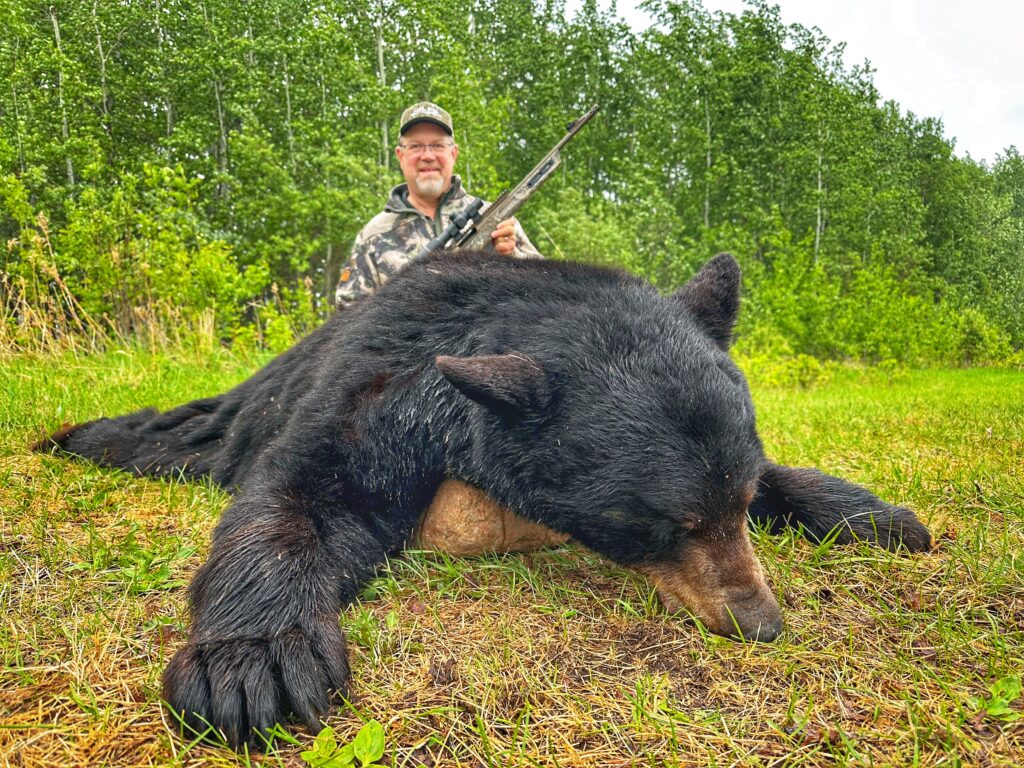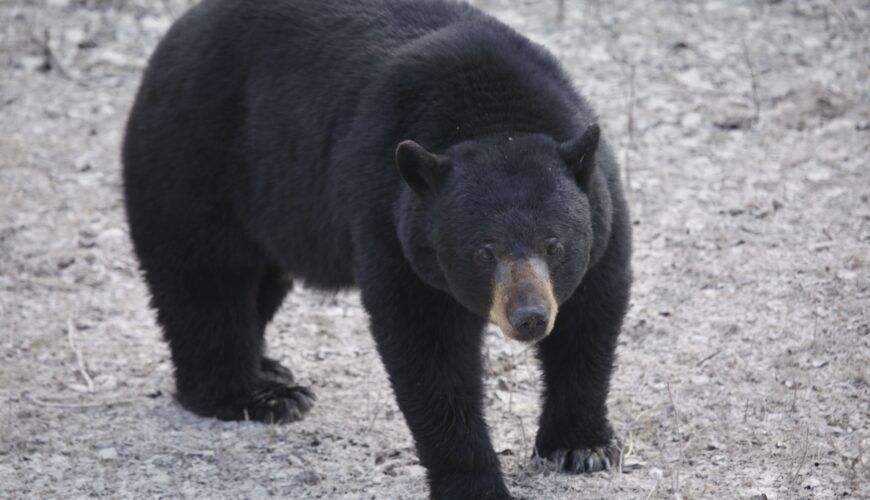Tactics
New Study Shines a Light on Buck Movement During the Rut
November 6, 2025 •iSportsman Staff
November 10, 2025
The first glimpse of a bear slipping through thick brush is unforgettable. A nose often appears before the rest of the animal, sniffing the air to ensure the way is clear. When a mature bruin finally steps into view, its size and presence leave no doubt that you are looking at a powerful animal. But while shooting is the easy part, judging a black bear correctly is one of the real challenges of the hunt.
Hunters often debate how to measure a bear. Official records are based on skull size, with Boone and Crockett setting the minimum at twenty-one inches and Pope and Young at eighteen. The problem is that bears are wrapped in muscle, fur, and fat that disguise their true frame, making it difficult to predict exact measurements. Instead of getting caught up in numbers, it is often wiser to focus on overall body size, maturity, and key features that reveal the difference between a trophy boar and an average bear.

The true size of a bear can be hard to judge, especially if they are running or in thick cover. Brad Fenson Photo
Black bears can be deceiving in ways that elk or deer rarely are. Ground shrinkage is common, and a bear that looks massive at first sight can suddenly seem much smaller after it is down. The priority is learning how to tell the difference between boars and sows. Mature boars carry a heavy, blocky appearance. Their heads have a pronounced crease down the forehead, and their muzzles are longer than those of females, which tend to look short-faced and narrow. Big boars develop sagging bellies that make their legs appear stumpy, and their sheer girth often bows the front legs outward. The neck and shoulders flow into each other until it seems as if the head sits directly on the chest. The ears look small and set to the side of the head rather than on top. Even the way an old boar walks sets it apart, with a lumbering, deliberate gait that signals both power and confidence. As a rule of thumb, if you are unsure whether a bear is truly mature, then it probably is not.
A sow will have a shallow face with a shorter muzzle, while a boar will have an elongated muzzle. A big bear walks with its front feet turned inward. Ears can be an indicator, although they can also be deceiving. Watch for the ears to be placed on the outside of the head and appear small, versus on top of the head, like a dog.

Black bears can actually be found with many different colors including chocolate, blonde or cinnamon to name just a few. Brad Fenson Photo
Color can complicate things further. Bears come in every imaginable shade, from jet black to blonde, chocolate, cinnamon, or even bluish gray. Some regions, such as Vancouver Island, are famous for massive, black-coated bears, while parts of Arizona and New Mexico often produce brown or cinnamon phases. In the Canadian north, you may encounter nearly every color, including rare glacier bears with frosty highlights. Sometimes, a color-phase animal can be so striking that it becomes the deciding factor in whether to pull the trigger.
Behavior is another clue. Bears live by a strict hierarchy, and large boars defend their dominance with tooth and claw. Mature males usually bear the scars of those fights, visible across their faces and shoulders. An old boar often carries himself with an unmistakable confidence. Medium-sized bears that act nervously, constantly glancing behind them, may be signaling that a dominant male is nearby. Observing the interactions between bears can reveal a great deal about which animals are truly at the top of the pecking order.
When hunting over bait, using reference markers can help size bears with greater certainty. A forty-five-gallon drum, for instance, makes an excellent gauge. If a bear blocks out the drum when walking in front of it, you know you are looking at something special. A painted post can serve the same purpose. Place a thirty-six-inch marker upright, and if the bear’s body hides it completely, you are seeing a large animal. These tools are especially valuable in low light when dark fur can hide details.

Whether hunting spot-and-stalk in the mountains or sitting over bait in thick timber, the ability to evaluate a bear correctly is a skill that comes with time and observation. Brad Fenson Photo
The spring season, running from mid-May through June in many areas, also offers an advantage during the rut. Boars will often shadow sows or square off against rivals, and observing these encounters provides excellent opportunities to study body size, behavior, and dominance. The more bears you watch together, the easier it becomes to recognize differences in maturity. Fall bears always look bigger, with a significant fat reserve to prepare them for hibernation.
Records can also guide hunters who are seeking the chance at a true giant. States like Pennsylvania and North Carolina, along with provinces such as Saskatchewan and Alberta, regularly produce skulls well above record-book minimums. Deciding where to hunt is just as important as knowing how to judge the bear once you see it.
Whether hunting spot-and-stalk in the mountains or sitting over bait in thick timber, the ability to evaluate a bear correctly is a skill that comes with time and observation. Pay close attention to the head, body proportions, gait, and attitude of each animal. Use markers when available and watch how bears interact with one another. By combining these details, you can make the right decision when the moment comes and ensure the bruin you take is everything you hoped for.
